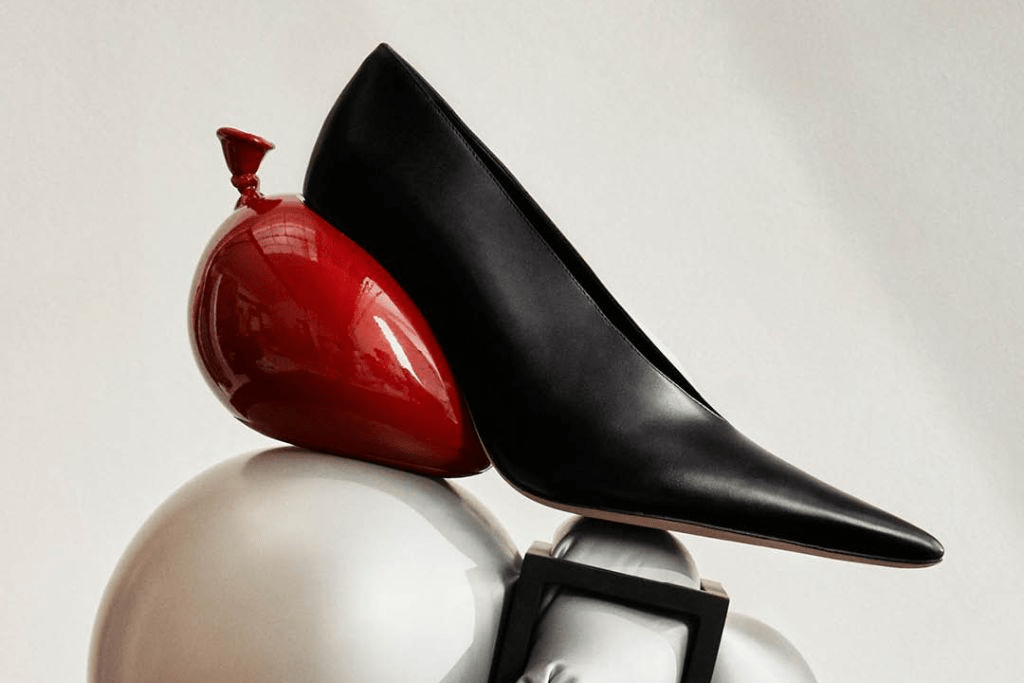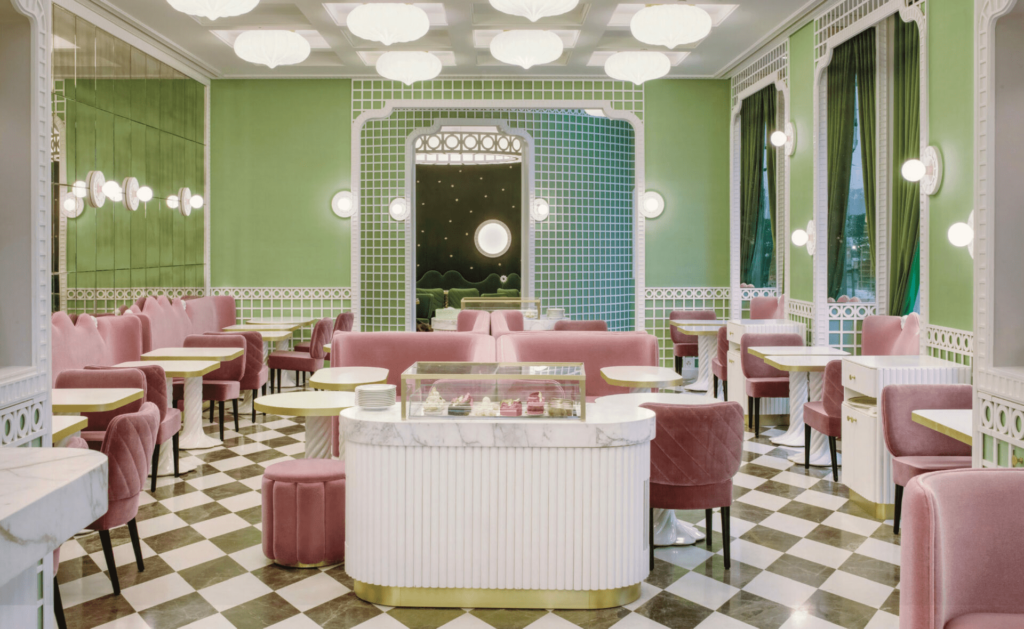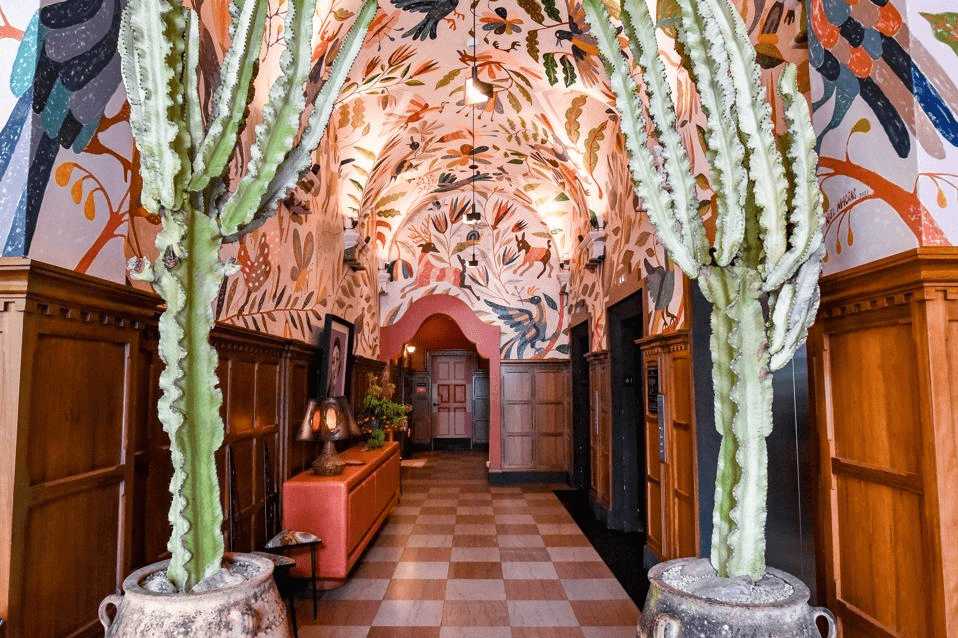
Winking Is the New Flex: Why Luxury Needs to Lighten Up
The most successful luxury brands aren’t whispering anymore—they’re laughing all the way to the bank.
For those who know me, I tend to treat marketing like a cocktail party—equal parts clever, playful and unexpected. I reserve solemnity for things that actually warrant it: hospitals, courtrooms, hostage negotiations…maybe funerals. But even then, why let death spoil a perfectly good eulogy? So, no surprise—I have little patience for brands that think the height of luxury is whispering in a marble showroom.
It’s not that elegance is dead. It’s that playfulness, once taboo in luxury, is now a differentiator. And the brands that understand this are walking the line between exclusivity and delight—and cashing in on it.
Luxury has always had a bit of a God complex. Legacy brands were built on mystique, tight-lipped heritage and unapproachably smooth surfaces. But what once signaled value now risks signaling detachment.
A 2023 Bain & Company study found that 72% of Gen Z luxury consumers say a brand’s personality matters more than its exclusivity. Yet many brands still behave like we’re in 1992—launching products as if the internet doesn’t exist and smiling is beneath them.

Joy Is a Competitive Advantage
Take Loewe, the Spanish fashion house revitalized by designer Jonathan Anderson. Their balloon heels and pixelated clothes are as surreal as they are covetable—and their sales rose 20% last year, according to LVMH. The products feel like high-concept art school jokes with couture-level execution. That’s the formula: wit with weight.
It’s not just fashion. In hospitality, Baccarat Hotel in NYC blends crystal-dripping opulence with Instagram-bait maximalism. Their room revenue is up 18% from 2019, (Statista). Guests want elegance, yes—but also a little sparkle, a moment, a flex.
Even in design, India Mahdavi—the Iranian-French architect known for her candy-colored interiors—has earned cult status. Her redesign of Ladurée’s flagship salon in Paris swapped sugary pastels for bold jewel tones, mirrored walls and sculptural velvet seating, turning the iconic patisserie into a surrealist jewel box. It wasn’t just a facelift—it was a repositioning. According to WGSN, brands partnering with Mahdavi saw social engagement rise 43% between 2022 and 2023. She makes luxury that feels like dessert—rich, layered and impossible not to share.

Not All Mischief Lands
Let’s be clear: not every attempt at fun is a masterstroke.
Remember the Chanel $825 Advent Calendar? Released in 2021 to celebrate 100 years of No. 5, it promised luxury behind 24 glossy black-and-white drawers. What it delivered: stickers, keychains, an empty dust bag and a plastic snow globe that looked like a cheap department store giveaway. TikTok had a field day, led by influencer Elise Harmon, whose unboxing racked up millions of views and a collective gasp from Gen Z. According to Morning Consult, Chanel’s brand favorability among that demographic dropped 14% in the US after the backlash.
The problem wasn’t the concept—it was the execution: joyless, stingy and wildly out of touch with what $825 is supposed to feel like.
Then there’s the Rolls-Royce NFT drop—an attempt to dip a toe into the Web3 hype without offering anything tangible, useful or even particularly beautiful. It didn’t damage the brand outright but disappeared without a trace, like a press release nobody read. A 2023 YouGov study showed 44% of consumers now view brand collaborations and gimmicks as “increasingly desperate.”
Fun without intent isn’t fun. It’s just noise.

Consumers Want to Play—With Meaning
Jacquemus gets it. The French designer sells micro-bags that can’t hold a Tic Tac—and somehow that’s a strength. He turned a Paris fashion show into a lavender field fantasy and created a collection around inflatable pool toys. Yet his brand has one of the highest engagement rates on Instagram across all luxury fashion houses (Launchmetrics, 2023). Why? Because people aren’t buying function. They’re buying a vibe. And increasingly, that vibe is about being in on the joke.
Luxury homebuyers are changing too. A 2023 Houzz Global Trends report found that 47% of luxury homeowners under 45 described their design style as “bold” or “playful,” versus just 19% of Boomers. That generational shift is seismic.
Even Furniture’s Getting Funky
Interior design has caught the memo. Kelly Wearstler, the American designer behind Proper Hotels, fuses brutalism with whimsy—hotels designed for guests who Instagram their bathtubs.
Or look at Toogood, the London-based design studio founded by Faye and Erica Toogood, whose sculptural “Roly-Poly” chairs look like they belong in a Pixar film—but are priced and positioned as functional art. They sell out with waiting lists.
When Herman Miller, the American office furniture legend, collaborated with streetwear giant Supreme on a red logo-branded Aeron chair, it sold out in hours. That wasn’t about lumbar support. That was about cultural cachet.
The Future of Luxury Is Expressive, Not Impressive
Gen Z and Millennials will account for 80% of all luxury spending by 2030, according to McKinsey. This is not the era of quiet power. It’s the era of conspicuous delight.
A recent McKinsey survey found that 81% of Gen Z luxury buyers globally prefer brands with a sense of play. Not play as in childishness—but personality, story, contradiction. Something to connect to. Something to talk about.
Even The Macallan’s collaboration with Bentley wasn’t just about whiskey or cars—it was about shared craftsmanship and indulgent storytelling. The packaging, the narrative and the product all reinforced each other. It gave consumers something to drink, post and brag about.
Let the Others Keep Whispering
Let the solemn brands stay in their grayscale temples, worshipping at the altar of Seriousness with capital-S serif fonts. But don’t be surprised when the playful ones outsell, outbuzz and outlast them.
Because…fun isn’t the opposite of luxury. It’s the evolution of it. A brand that can make you laugh, spark delight or surprise you—and still charge $1,000 for it—isn’t diluting its value. It’s upgrading it.
And if they do it while wearing pixelated pants and drinking out of a crystal goblet shaped like a duck?
Even better.



